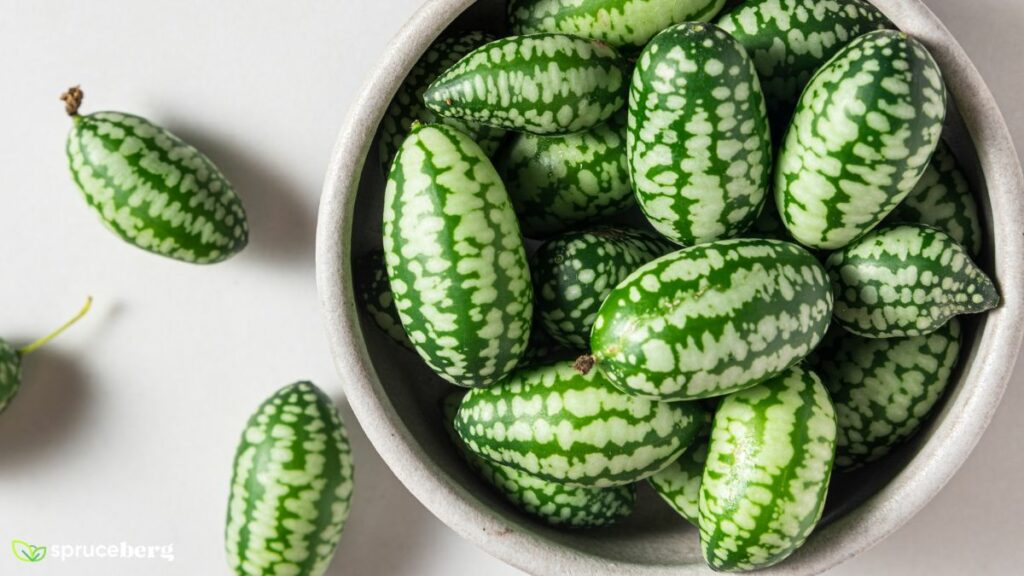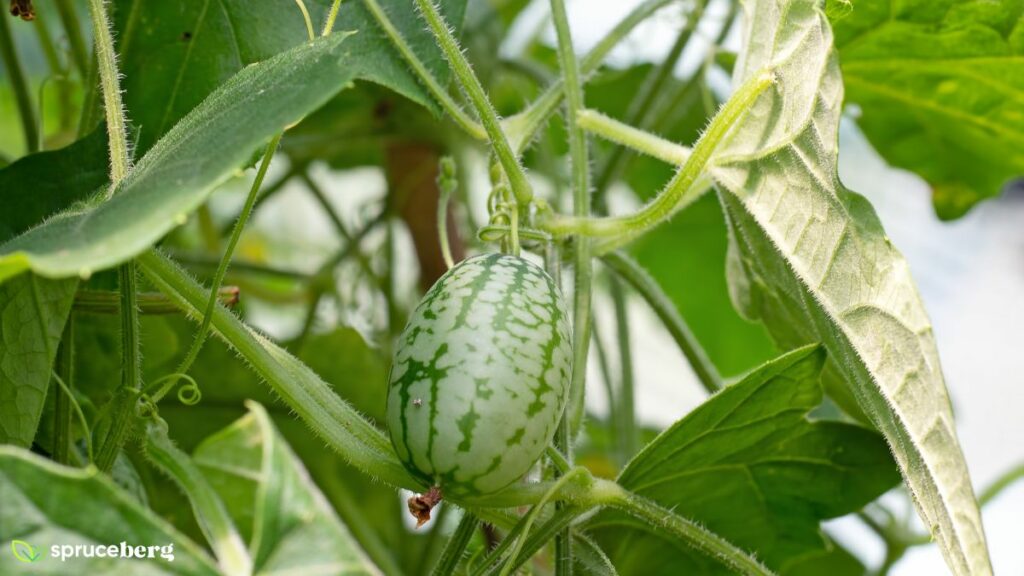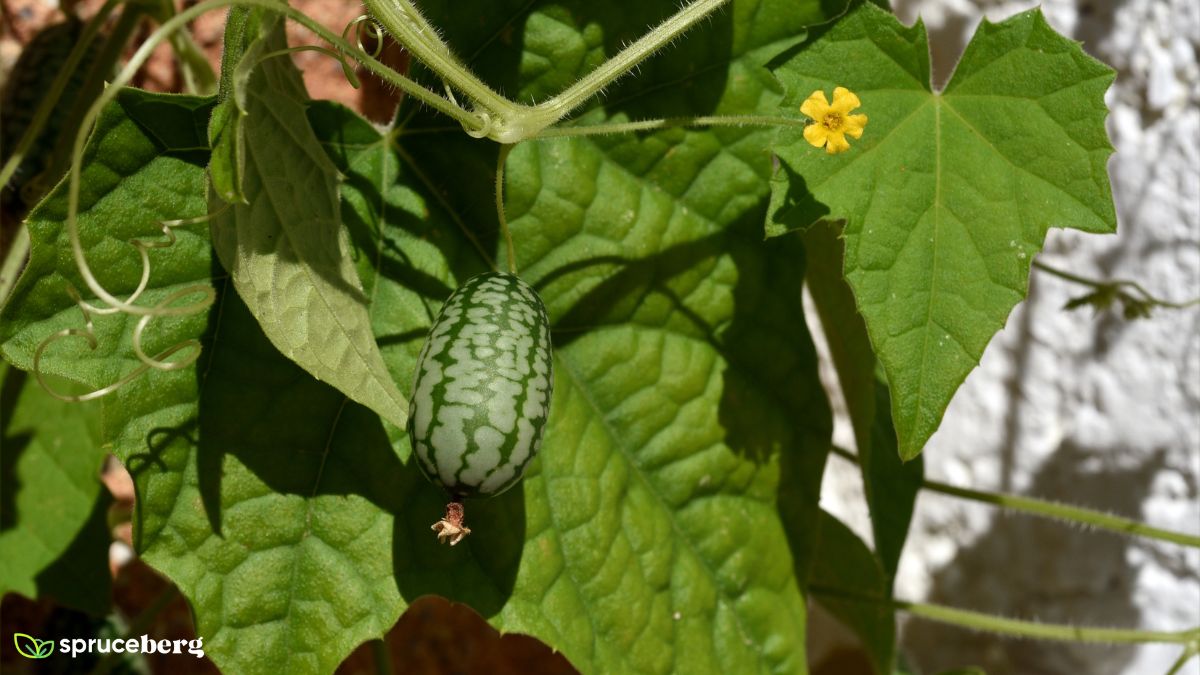Are you looking for a natural way to improve your overall health and well-being?
Look no further than the Kuska plant! This unique vegetable plant, belonging to the cucumber family, has been used for centuries as an herbal remedy in many cultures around the world.
One of the top benefits of the Kuska plant is its potential to aid in weight loss. Not only is it low in calories, but it also contains compounds that can help regulate blood sugar levels and boost your metabolism.
Additionally, the plant is rich in antioxidants and anti-inflammatory properties, which can help protect your body from harmful free radicals and reduce inflammation.
What Is Kuska Plant?

If you’re looking for a new vegetable to add to your diet, you might want to consider the Kuska plant. This unique plant is a highly productive, easy-to-grow vegetable belonging to the family cucurbitaceae. Although it is a perennial species, it is typically grown as an annual due to its sensitivity to frost.
The Kuska plant is a vining species that can grow up to 2.5-3 meters in height. It produces long, slender fruits that can be eaten fresh or cooked. The fruit has a slightly sweet taste and a crunchy texture, making it a great addition to salads, stir-fries, and other dishes.
In addition to being delicious, the Kuska plant has a range of potential health benefits. For example, it is rich in vitamins and minerals, including vitamin C, calcium, and potassium. It also contains antioxidants, which can help protect your body against damage from free radicals.
Overall, the Kuska plant is a versatile and nutritious vegetable that can be enjoyed in many different ways. Whether you’re looking to add more vegetables to your diet or you’re just curious about trying something new, the Kuska plant is definitely worth considering.
Benefits Of Kuska Plant
Medicinal Properties
The Kuska plant (Melothria Scabra) has been traditionally used in some cultures for its potential medicinal properties.
However, it’s important to note that scientific research on the medicinal benefits of the Kuska plant is limited, and any medicinal use should be approached with caution and under the guidance of a qualified healthcare professional.
Here are some of the potential medicinal properties and uses associated with the Kuska plant:
- Anti-inflammatory: Some traditional medicinal practices suggest that the Kuska plant may possess anti-inflammatory properties. This means that it could potentially help reduce inflammation in the body, which is associated with various health conditions.
- Antipyretic: The Kuska plant has been used in traditional medicine as an antipyretic, which means it may have the ability to lower fever. However, it’s essential to remember that fever is often a symptom of an underlying condition, and treating the underlying cause is crucial.
- Analgesic: In certain traditional remedies, the Kuska plant has been used for its potential analgesic properties, which means it may have pain-relieving effects. Again, more scientific research is needed to validate these claims.
- Wound Healing: Some traditional healers have used the Kuska plant to aid in the healing of minor wounds and skin irritations. It may be applied topically to promote the recovery process.
It’s important to emphasize that while the Kuska plant may have a history of traditional use in certain cultures, modern scientific evidence supporting its medicinal properties is limited or lacking. Therefore, relying solely on the Kuska plant for medical treatment is not recommended.
If you are considering using the Kuska plant for any medicinal purposes, it is vital to consult with a qualified healthcare professional or an herbalist who can provide appropriate guidance and ensure safe usage.

Attracts Beneficial Pollinators
Kuska plant (Melothria Scabra) is known for its ability to attract beneficial pollinators to the garden. Pollinators are essential for the reproduction of many plants, as they facilitate the transfer of pollen from the male part of the flower (anther) to the female part (stigma), leading to fertilization and the production of seeds.
Some of the beneficial pollinators that the Kuska plant can attract include:
- Bees: Bees are one of the most important pollinators for plants. They are highly attracted to the bright and colorful flowers of the Kuska plant, seeking nectar and pollen as their food source. As bees collect nectar, they inadvertently transfer pollen from one flower to another, aiding in cross-pollination.
- Butterflies: Butterflies are attracted to the nectar-rich flowers of the Kuska plant. As they feed on the nectar, they pick up pollen on their bodies and transfer it to other flowers they visit, helping in the pollination process.
- Hummingbirds: Hummingbirds are known for their ability to hover and feed on nectar from various flowers, including those of the Kuska plant. Their long, slender bills and specialized tongues allow them to reach deep into the flower, making them effective pollinators as they move from one flower to another.
By attracting these beneficial pollinators to your garden through the cultivation of Kuska plants, you not only enhance the beauty of your outdoor space but also support the ecosystem and promote biodiversity. These pollinators play a crucial role in the reproduction of many plants, including food crops, and contribute to the overall health and balance of the natural environment.
The Kuska plant (Melothria Scabra) offers some surprising culinary uses, particularly in traditional cooking practices in certain regions.
While not as widely known as other culinary herbs and vegetables, the young leaves of the Kuska plant are edible and have a unique flavor that can add a special touch to various dishes. Here are some ways in which the Kuska plant is used in culinary applications:
In culinary applications, the Kuska plant’s young leaves can be used raw in salads to add a refreshing and slightly tangy element.
When combined with other salad greens, vegetables, and dressing, they create a delightful and nutritious salad.
Additionally, the leaves can be cooked as a side dish or incorporated into various recipes. Similar to spinach or other leafy greens, they can be sautéed, boiled, steamed, or stir-fried, and seasoned with herbs and spices to enhance their taste.
While the culinary uses of the Kuska plant may not be as widespread as more common ingredients, in certain culinary traditions, it is used in traditional dishes where the leaves are cooked along with other ingredients to create flavorful and wholesome meals.
However, it’s important to note that culinary practices can vary greatly across different cultures and regions, and the use of the Kuska plant as a culinary ingredient may be more prevalent in specific areas where it is grown and cultivated.
Soil Improvement
The Kuska plant (Melothria Scabra) offers significant benefits for soil improvement through its unique ability to fix nitrogen.
Nitrogen fixation is a natural process where certain plants, like legumes, form a symbiotic relationship with nitrogen-fixing bacteria in the soil. This process converts atmospheric nitrogen into a form that plants can use as a nutrient.
Nitrogen Fixation: The Kuska plant is a leguminous plant, which means it belongs to a family of plants known for their nitrogen-fixing abilities.
The Kuska plant forms nodules on its roots that house nitrogen-fixing bacteria known as rhizobia.
These bacteria take nitrogen from the air and convert it into a form (ammonium) that the plant can utilize as a nutrient for growth and development.
Soil Enrichment: As the Kuska plant grows and thrives, it takes up the fixed nitrogen from the soil, effectively enriching the soil with this essential nutrient.
When the plant eventually dies and decomposes, the nitrogen it accumulated is released back into the soil, making it available for other plants in the vicinity.
Fertilizer Reduction: The ability of the Kuska plant to fix nitrogen in the soil reduces the need for synthetic nitrogen fertilizers in the garden.
This is environmentally beneficial as excessive use of synthetic fertilizers can lead to water pollution and other ecological issues.
Enhancing Soil Fertility: Nitrogen is a crucial nutrient required for healthy plant growth.
By enhancing the soil’s nitrogen content, the Kuska plant helps improve overall soil fertility, supporting the growth of neighboring plants and contributing to a more robust and thriving garden ecosystem.
Crop Rotation and Soil Health: In agricultural practices, including leguminous plants like the Kuska plant in crop rotations can help improve soil health.
Rotating crops that fix nitrogen with those that deplete it can help maintain a balanced nutrient profile in the soil, reducing the risk of soil degradation and nutrient depletion.
Ornamental Beauty
The Kuska plant (Melothria Scabra) is highly valued for its ornamental beauty, making it a captivating addition to any garden or landscape.
With its vibrant and eye-catching flowers that come in various shades of red and pink, the Kuska plant instantly becomes the center of attention in any outdoor space. The flowers have an intricate design and delicate blossoms, adding an element of elegance and charm to the garden.
The bright and colorful flowers of the Kuska plant create a stunning visual display that can enliven any garden area, be it a private backyard, a public park, or a botanical garden.
The plant’s captivating beauty draws the eye, making it a focal point in any landscape design. Whether planted as standalone specimens or incorporated into flower beds and borders, the Kuska plant lends a touch of vibrancy and allure to the surroundings.
Kuska Plant: Key Takeaways
- The Kuska plant (Melothria Scabra) is an ornamental wonder, prized for its vibrant and eye-catching flowers that come in various shades of red and pink.
- Its delicate blossoms and intricate design add elegance and charm to any garden, making it an excellent choice for enhancing the aesthetics of outdoor spaces.
- The Kuska plant requires low maintenance, making it suitable for gardeners of all levels of experience and available time.
- Its flowers attract beneficial pollinators such as bees, butterflies, and hummingbirds, contributing to the health and biodiversity of the ecosystem.
- While the Kuska plant has a history of traditional medicinal use, scientific evidence supporting its medicinal properties is limited, and any medicinal use should be approached with caution and under professional guidance.
- The Kuska plant is a nitrogen-fixing plant, enriching the soil by converting atmospheric nitrogen into a usable form, which enhances soil fertility and benefits neighboring plants.
- Surprisingly, the young leaves of the Kuska plant are edible and have a mild, tangy flavor, offering unique culinary uses in salads and various cooked dishes.
- When incorporating the Kuska plant into the garden, it becomes a delightful focal point, providing a vibrant visual display and enhancing the overall appeal of the landscape.
- The Kuska plant’s versatility allows it to adapt well to different gardening styles, making it suitable for both small and large garden spaces.
- The ornamental beauty of the Kuska plant makes it a valuable addition to any garden, providing an enchanting and visually appealing outdoor environment.

Leave a Reply